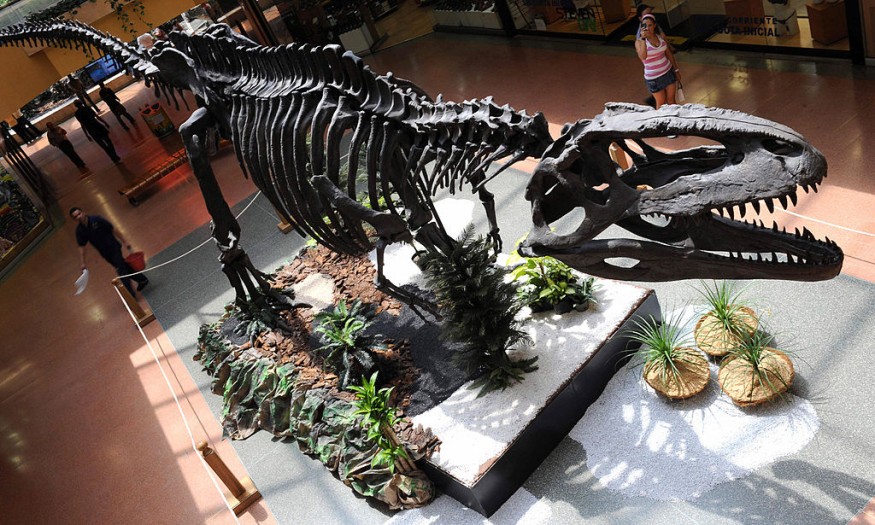A new dinosaur species was discovered in Argentina. The creature's physiology aligns with the unique group of prehistoric giants. Named as Guemesia ochoai, the theropod dinosaur is theorized to belong in the "armless" population that existed in the southern hemisphere 70 million years ago.
Guemesia ochoai: Abelisaur Theropod in Argentina

The Guemesia ochoai's fossil that was excavated in Argentina presented a partial skull that could provide substantial evidence of how the ecosystem worked back in the Late Cretaceous period.
The Guemesia ochoai is a species that belongs to the clade of meat-eating beasts called abelisaurid. These animals are known to roam ancient territories that are part of present-day India, Africa, and South America. The discovery of the dinosaur opens speculation that it might actually be a close relative of the abelisaurid's ancestors.
The skull of the Guemesia ochoai contains a set of clues that presents how the dinosaur existed in a region where only a few abelisaurid fossils were discovered.
Natural History Museum's life sciences expert and co-author of the study Anjali Goswami said that the new dinosaur is unique, and there are several characteristics of its fossil that serves as strong evidence that the creature is a new species.
Newly Discovered Dinosaur From Argentina Belongs to a Rather 'Armless' Family https://t.co/GSXfLqqmsK
— ScienceAlert (@ScienceAlert) February 21, 2022
The discovery of the dinosaur shows that the clade population that lived in the region was quite different compared to other species that roamed in other parts of Argentina.
The study supports the concept of South America's existence during the Cretaceous period. In addition, the excavation of the Guemesia ochoa proves that there are still paleontological discoveries hidden in the provinces of the country that get less attention than more popular sites.
The Guemesia ochoa lived through a period where Earth's supercontinent known as the Pangea began to split into smaller landmasses. Among the continents that drifted was Gondwana, which formed the major regions of the present-day southern hemisphere.
The continental drift is not fast, contrary to popular belief. While the Pangea drifted to many parts of the globe, prehistoric animals were still able to roam across various regions. This constructed a theory that the fauna in each of the modern-day continents might contain similar biodiversity.
ALSO READ : New Cretaceous Lizard With Intact Eyelids Stuck in Amber Discovered After 110 Million Years
Armless Carnivores of Late Cretaceous
Abelisaurs had tiny arms that were even smaller compared to the popular Tyrannosaurus rex. Their forelimbs contrasted their gigantic bodies, causing the part to be useless throughout their evolution. However, this imperfection pushed the abelisaurs to develop their jaws and head into powerful assets for food hunting.
Previous studies recovered fossils of the abelisaurs from India, Africa, South America, and Europe, with all dating back to the Late Cretaceous period. The timeline of this group was among the last of the prehistoric giants, as their mass extinction would eventually take place in the spring season 66 million years ago.
Argentina holds the record of most abelisaur fossils. Up until today, there were already 35 new species of the dinosaur group confirmed in the country. The majority of the abelisaurs were discovered around Argentina's southern region Patagonia, while the Guemesia ochoa was the first to be excavated from the country's northwest.
CONICET expert and lead author Federico Agnolin said in a Reuters report that the new dinosaur species may have had a "very sharp sense of smell, "near-sighted, and walked upright with its large cranium facing forward - a feature that might also be used for charging prey.
The study was published in the Journal of Vertebrate Paleontology, titled "First definitive abelisaurid theropod from the Late Cretaceous of Northwestern Argentina."
RELATED ARTICLE : Fish Bones Reveal Dinosaur-Killer Chicxulub Hit the Earth During Spring 66 Million Years Ago
Check out more news and information on Paleontology in Science Times.












